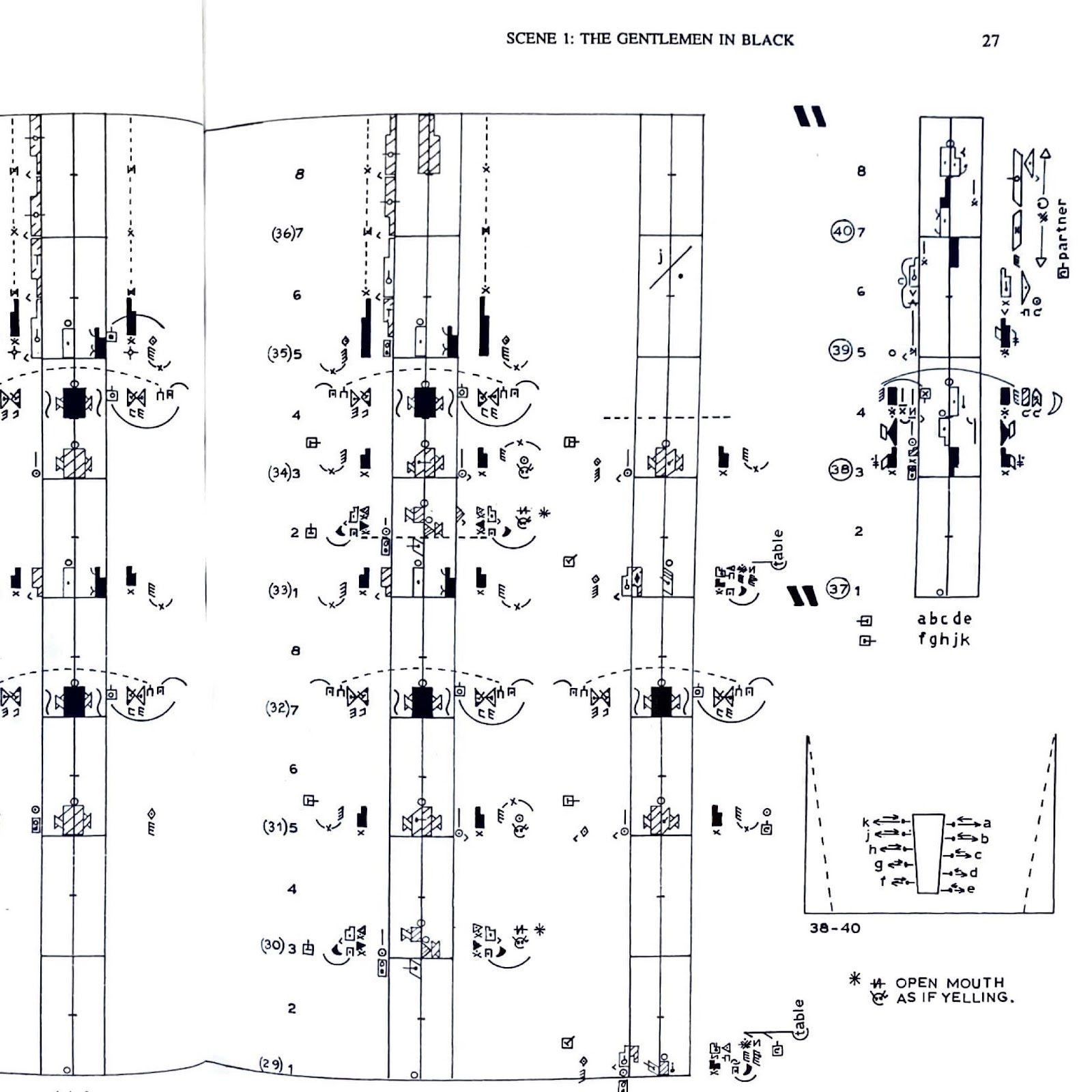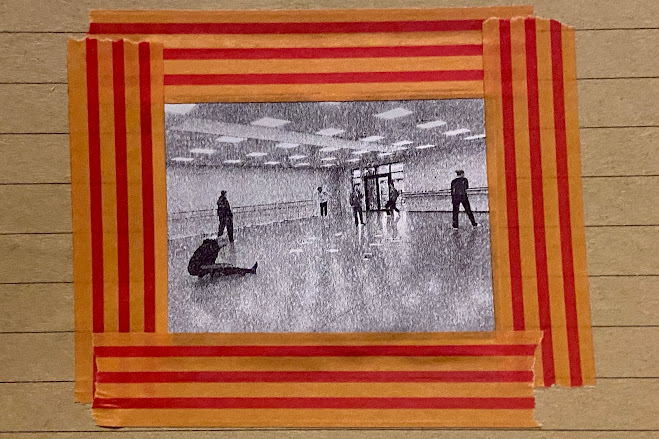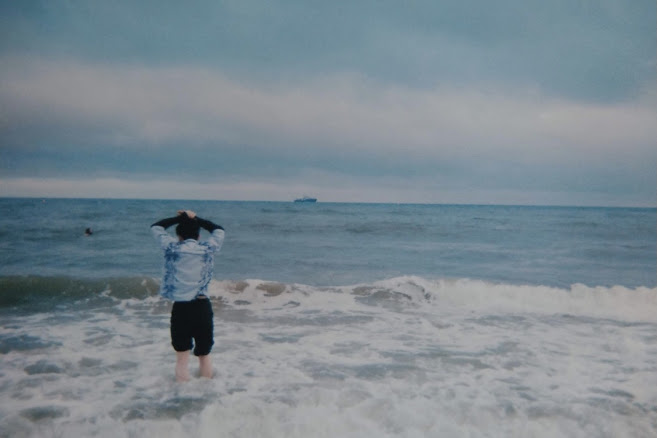1. my queen is ada eastman
I started back at work this week, so I also wanted to come back to writing! Since there’s been little break I’ll start the numbering again as if it’s the start of something new - which it could be, but most likely it will be a continuation of something old.
I've been thinking around copying, plagiarism and the art of the parody - I want to discuss some perspectives from others alongside thoughts I’ve been having on this. I’ve just got back from a beautiful holiday in Kiruna (Sweden), where I stayed at ICE HOTEL - which was just beautiful, I’ll blog about it shortly! In ICE HOTEL: The Experience, founder Yngve Bergqvist is interviewed sharing their philosophy that most things which can be done, haven’t been done yet. I thought this was remarkable - I’ve definitely encountered so many teachers, choreographers and colleagues who have had the opposite philosophy: everything has already been done before. Maybe this relates specifically to the finite possible configurations of the human form (although as I say that I suspect under closer observation the body must have something like infinite possibilities). Often it comes alongside an encouragement to not fret over copying or borrowing - I had a great teacher who would say ‘everything’s stolen’.
Another element within this is using shorthands, it’s potentially faster to ask for a Hofesh quality, which can (maybe) be produced from a shallow knowledge, compared to devoting time to discovering that quality through guided movement/ethnochoreological research. I use the Hofesh example because I have experienced it a lot, perhaps that points to a movement vocabulary which is so well crafted that there is a common understanding of what that is (for professional dancers trained in the UK at least), perhaps Hofesh and it’s respective dancers have reached such a wide proportion of my generation that there does lie an embodied understanding of that movement. In the spirit of considering copying, it could also be that discussing a Hofesh movement language is a reference to origins in Gaga and Traditional Yemen Folk Dance - that is also interesting with copying, is both the attempt to, and the recognition of knowing/not-knowing how many maker’s hands have touched this before your own.
In Ann Hutchinson Guest's The Green Table: The Labanotation Score, Text, Photographs, and Music (Language of Dance Series) (2003) - Kurt Jooss states that the dancer coming to this work should aim to follow exactly the structure offered here. Jooss believes that they have considered each and every pathway, gesture or musicality that there is no need for personal interoperation from the dancer. I don’t quite know how to feel about this. I can both be impressed by the sheer self-confidence in one’s storytelling ability, and I can also feel this is a boring and superficial understanding of the beauty of how movement transforms as it is passed through dancers. It is certainly a very specific taste to believe that simply through exact replication of your predecessor, the work not need anything further. I’m a big fan of ready meals - and even for me this is slightly too ready made. For my taste it is a complete reduction of the artistry of the dancer and the value of the lived experience of each dancer who comes to a role.
However, I have a practice which I’m engaged with which centres around copying. I call it Movement Studies, here is how I describe it:
Movement Studies is a semblance of the movements (not the facial expressions) from a recording of a physical sequence - taken often from film or television. I share the results as split-screen videos on Instagram between 15 and 40 seconds long. I’m interested in welcoming a wide audience into this process. I enjoy that it invites attentiveness to precision and dialogue around ownership/plagiarism. I see it as a body of work co-owned by its audience, yours to share, to critique and to recreate. It is a durational work that audiences are constantly coming in and out of.
I have some frameworks which I use to ensure this process remains ethical:
- I always credit the work, and try to research to discover if the work has a choreographer (who might often be uncredited in the source material itself)
- More recently I am trying to ensure I use the original music where possible - this came about after the recent trend of reimagining Jenna Ortega’s choreography from Wednesday (2022) to Lady Gaga’s Bloody Mary (2011).
- I actively seek out impossible movement sequences to replicate: cartoons, robots etc - meaning I as the creator (or re-creator) and the audience are reminded that this is a process of reimagining and problem solving. It is an attempt to be fascinated in the minute details but it’s also a duet of two things that will never be the same.
I like these thoughts from Brecht on Theatre (1964) discussing the mastering of models:
Possibly the whole, or certain parts, may give no impression of life when reproduced; in that case the whole, or certain parts in question must be discarded. A model cannot depend on cadences whose charm is due to particular voices or gestures and movements whose beauty springs from particular physical characteristics; that sort of thing cannot serve as a model, for it is not exemplary so much as inimitable. If something is to be usefully copied it must first be put forward for copying. (Brecht, 1964, pg. 211)
The choreographic figures (positions, movements, groupings etc) can be treated either slavishly or masterfully; that is, masterfully in so far as reality penetrates them freely... The emphasis is on development: changes are to be provoked and to be made perceptible; sporadic and anarchic acts of creation are to be replaced by creative processes whose changes progress by steps or leaps. (Brecht, 1964, pg. 211-212)
Anyone who deserves the name of artist is unique; he represents generalities in a special way. He can neither be perfectly imitated nor give a perfect imitation. Nor is it anyway so important for artists to imitate art as to imitate life. (Brecht, 1964, pg. 216)
I really like these ideas as a framework for copying - they are also a good reminder of how much copying can be critically included in discussions around archiving and documentation.
On plagiarism:
I reacted very strongly recently to seeing the below quote on the wall outside the recent The Art of Banksy exhibition in Salford:
“Art should comfort the disturbed and disturb the comforted” - Banksy
I reacted strongly because I know Banksy isn’t the first person to say this, it was famously said by Cesar A. Cruz who appears to have been adapting an earlier quote from Finley Dunne. Maybe this has become such a famous quote that it is easy for this to happen, I guess many quotes that you might be able to buy on a canvas from a home store have probably seen the same erasure of authorship… the one that annoys me most is ‘Life isn’t waiting for the storm to pass, but it’s about learning to dance in the rain’. I guess I feel there is something interesting about an artist such as Banksy who has used intellectual property for the means of political commentary: when Banksy takes an image from The Wizard of Oz (1939), The Jungle Book (1967), or Pulp Fiction (1994) they add to them - when they take the words of a philosopher without citing them and use them as their own it doesn’t sit well with me. Full disclaimer - Banksy might have acknowledged the author, it could be that The Art of Banksy removed this to make a snappier branding for themselves (which would still be annoying!)
I’m going to carry on with my semblances - they give me a lot. Someone wrote to me a few weeks ago to say going through my Instagram account is like going through a museum - and this made me so happy. It feels right to be making new things and old things, it is not that I see everything of interest having already been done - but I’m studying and I’m learning, expanding vocabularies, sharing, questioning - and I’m very alive in these processes and for now I think that is enough.
You can see Movement Studies here if you like: Movement Studies (Instagram)
image one - Save or Delete, Banksy
image two - The Green Table, Ann Hutchinson Guest
image three - Movement Study of Pulp Fiction (1994), Tyler Palmer
image four - The purpose built structure for the Art of Banksy in Salford, Claire Hannah
image five - Remy Costume and Puppet Design, @deeclemm (Tiktok)
-
'My Queen is Ada Eastman’ - Your Queen Is A Reptile, Sons of Kemet, Track 1








Comments
Post a Comment